5 Tips for Mixing Kitchen Countertop Materials
Tired of the same old kitchen looks? Follow these tips to create a kitchen with more personality and punch
Sam Ferris
February 25, 2019
Houzz Contributor. I write about all things remodeling, interior design, and home improvement at tukasacreations.com/kasa-blog. I also design kitchen cabinets and am Marketing and Social Media Director for Tukasa Creations, Inc., a flooring, remodeling and design store.
Houzz Contributor. I write about all things remodeling, interior design, and home... More
The idea of combining two countertop styles in your kitchen might seem overwhelming at first, but it’s a relatively cut-and-dried process. It all boils down to balance, color coordination and effortlessly mixing different materials. Ready to start piecing together your design? Here are five strategies to put in your playbook.
1. Pay Attention to Patterns
Take special note of patterns when you’re shopping for more than one countertop design. The last thing you want is two styles that clash. If two options both have significant movement or pattern, pairing them can overwhelm your kitchen design and distract the eye. If you find yourself drawn to busy designs, search for a complementary countertop that’s solid-colored or has minimal pattern. This will ensure that one counter material doesn’t compete with the other.
Take special note of patterns when you’re shopping for more than one countertop design. The last thing you want is two styles that clash. If two options both have significant movement or pattern, pairing them can overwhelm your kitchen design and distract the eye. If you find yourself drawn to busy designs, search for a complementary countertop that’s solid-colored or has minimal pattern. This will ensure that one counter material doesn’t compete with the other.
Marble, granite and other natural stones typically feature a lot of movement, though many engineered materials now mimic these natural stones. Try matching one of these materials with a toned-down quartz or solid surface for the perfect balance. If you’re set on an all-natural look, you can play with color instead of pattern.
Find kitchen designers on Houzz
Find kitchen designers on Houzz
2. Coordinate With Accent Colors
Accent colors can come from your favorite art piece, linens, furniture, plumbing fixtures, cabinet hardware and even your range hood. If there’s a shade you’re fond of, pick a countertop design that either matches or incorporates that tone in its pattern. The downside to this strategy is that your countertop may look out of place if you ever decide to change your kitchen’s accent colors. While that shouldn’t discourage you altogether, it’s something to know before you sign on the dotted line.
Shop for cabinet hardware
Accent colors can come from your favorite art piece, linens, furniture, plumbing fixtures, cabinet hardware and even your range hood. If there’s a shade you’re fond of, pick a countertop design that either matches or incorporates that tone in its pattern. The downside to this strategy is that your countertop may look out of place if you ever decide to change your kitchen’s accent colors. While that shouldn’t discourage you altogether, it’s something to know before you sign on the dotted line.
Shop for cabinet hardware
This transitional San Francisco kitchen built by Singlepoint Design Build features a dark island top that coordinates well with its inky lower cabinets, creating a cohesive aesthetic among the wood, stone, metal and painted finishes.
3. Balance Dark With Light
The age-old principle of yin and yang applies to countertop design too. If your first choice is on the lighter side, look for a darker second choice for contrast. You can go with a classic black-and-white motif as seen in this midcentury kitchen built by Don Tankersley & Co., or mix light and dark neutrals, pastels, primary colors and so on.
The age-old principle of yin and yang applies to countertop design too. If your first choice is on the lighter side, look for a darker second choice for contrast. You can go with a classic black-and-white motif as seen in this midcentury kitchen built by Don Tankersley & Co., or mix light and dark neutrals, pastels, primary colors and so on.
When creating a light-dark dynamic, there’s more than one approach. If you have mixed cabinet colors, you can use a light countertop with light-colored cabinets (and vice versa) for a more dramatic contrast between your two designs. You can also opt for balance by placing your darker selection on lighter cabinetry. If your cabinetry is the same color throughout, consider other factors, such as how well each countertop design stacks up to your backsplash material.
4. Create an Accent Piece on Your Island
Whether they feature bold color tones or unusual patterns, many designs are natural showstoppers. There’s no better spot to install them than the hub of your kitchen. Wrapping your island with dramatic patterns and sweeping veins, such as in this Toronto kitchen island designed by Lori Morris, will create a focal point that stands out, especially if the rest of your kitchen’s color scheme is neutral or muted.
Whether they feature bold color tones or unusual patterns, many designs are natural showstoppers. There’s no better spot to install them than the hub of your kitchen. Wrapping your island with dramatic patterns and sweeping veins, such as in this Toronto kitchen island designed by Lori Morris, will create a focal point that stands out, especially if the rest of your kitchen’s color scheme is neutral or muted.
Accent pieces don’t have to be over-the-top. You can opt for styles that bring flair yet still mesh well with the rest of your space. This coastal kitchen island built by Seaside Construction features sparse veins amid a white background that pop next to the solid gray perimeter tops.
5. Mix Materials
If you’re undecided between two polar-opposite materials, there’s good news: You can use both. It’s common to pair both engineered surfaces such as quartz and porcelain with natural surfaces like granite and soapstone. You can even mix two different types of stone (travertine with granite, for instance). The drawback? One cleaning agent won’t necessarily fit all. For example, you can use a product like Windex on engineered surfaces, but it isn’t recommended for natural stone. Read up on each surface’s cleaning guidelines before you start wiping it down.
If you’re undecided between two polar-opposite materials, there’s good news: You can use both. It’s common to pair both engineered surfaces such as quartz and porcelain with natural surfaces like granite and soapstone. You can even mix two different types of stone (travertine with granite, for instance). The drawback? One cleaning agent won’t necessarily fit all. For example, you can use a product like Windex on engineered surfaces, but it isn’t recommended for natural stone. Read up on each surface’s cleaning guidelines before you start wiping it down.
Other popular material options include a custom wood piece or butcher block. These can bring warmth and texture to your space, especially when mixed with a clean quartz or solid-surface style.
More on Houzz
What Countertop Color Should You Choose?
Houzz Quiz: What Kitchen Countertop Is Right for You?
Find kitchen designers
Shop for kitchen products
More on Houzz
What Countertop Color Should You Choose?
Houzz Quiz: What Kitchen Countertop Is Right for You?
Find kitchen designers
Shop for kitchen products
Related Stories
Urban Gardens
Outdoor Dream Rooms Give a Chicago Family More Space for Living
Alfresco dining, a built-in spa and an outdoor TV lounge transform this urban yard
Full Story
Bar Stools & Counter Stools
Highest-Rated Swivel Bar Stools
By Houzz
Shop these swiveling seats for a design that turns heads
See Products
Lighting
A Lighting Pro’s 5 Tips for Buying LED Bulbs
By David Warfel
Make a smarter choice and improve the look of your home after dark with these guidelines from a lighting designer
Full Story
Kitchen Trends
What’s Popular for Kitchen Counters, Backsplashes and Walls
By Erin Carlyle
White is the top pick for counters and backsplashes, and gray is the most popular color for walls, a Houzz study reveals
Full Story
White Kitchens
11 Ways a Colorful Appliance Can Perk Up Your Kitchen
By Erin Carlyle
Whether your kitchen is mostly white or full of color, appliances that aren’t white or stainless can jazz up your space
Full Story
Bar Stools & Counter Stools
This Season’s Bestselling Bar Stools
By Houzz
Choose from these popular stools to give your counter a new look
See Products
Kitchen Design
5 Great-Looking Galley Kitchens That Really Cook
By Becky Harris
See how designers make these narrow spaces work for their owners
Full Story
For Pros
New Looks for Kitchen and Bath Faucets in 2019
By Erin Carlyle
Statement faucets, mixed metals, matte black and gold were on display at the recent Kitchen & Bath Industry Show
Full Story
Houzz Tours
Houzz Tour: ‘Plain and Simple’ Update for a Center-Hall Colonial
By Becky Harris
An interior designer renovates a 100-year-old home near Boston with timeless touches that fit a couple’s busy lifestyle
Full Story
For Pros
New Looks for Cabinets and Countertops Emerging in 2019
By Erin Carlyle
Dark colors, wood patterns and thin surfaces are a few of the trends seen at the recent Kitchen & Bath Industry Show
Full Story





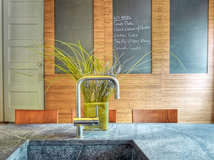

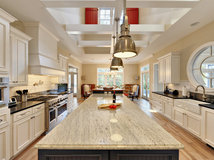



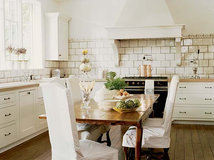
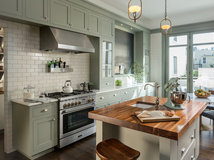


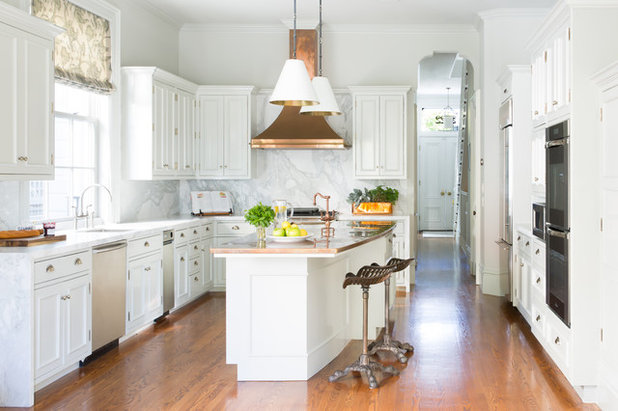
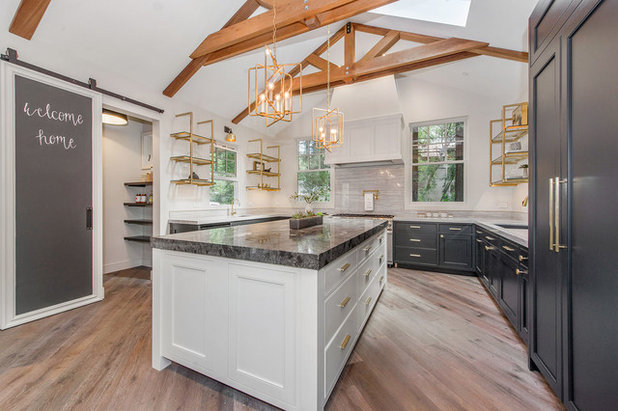



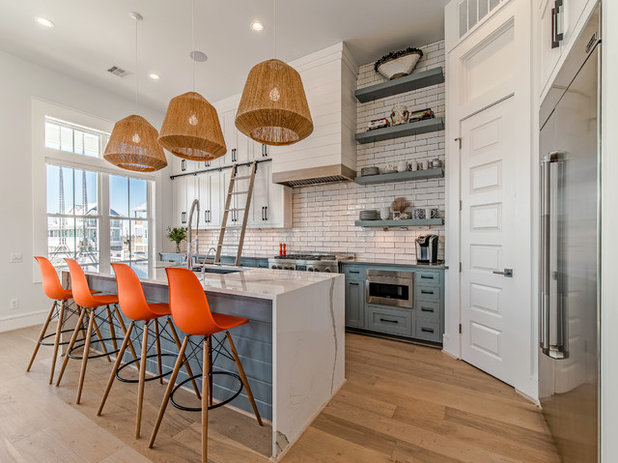

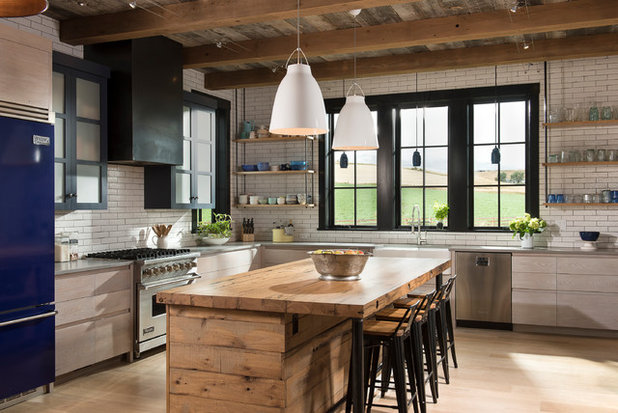










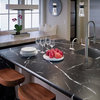

















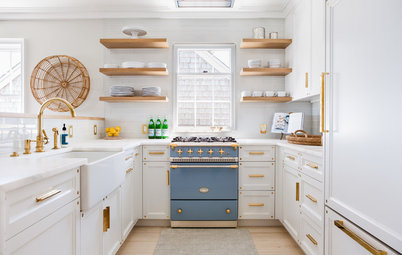


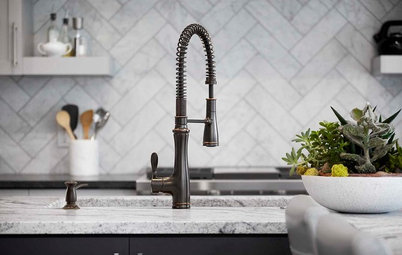

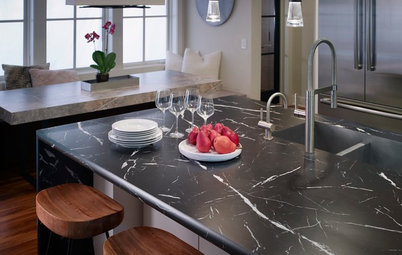
Great article on mixing countertops! In my new home, I have white quartz with grey veining, but around the stove I have dark grey granite look quartz. I love it and so does everyone else who has seen it. I happened to see it in a magazine at the doctor's office and loved it. Who new I was so trendy?
Building a new home and this gave us a great idea! Thanks!
Just have to say ewh to all these kitchens.